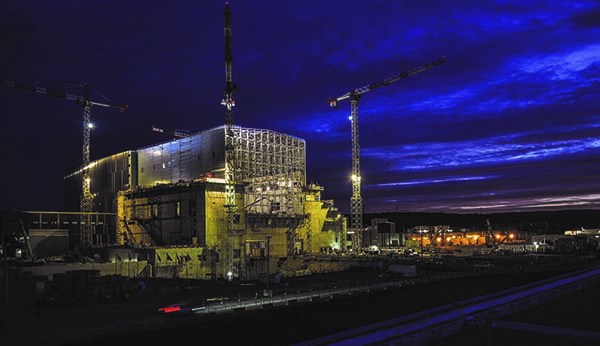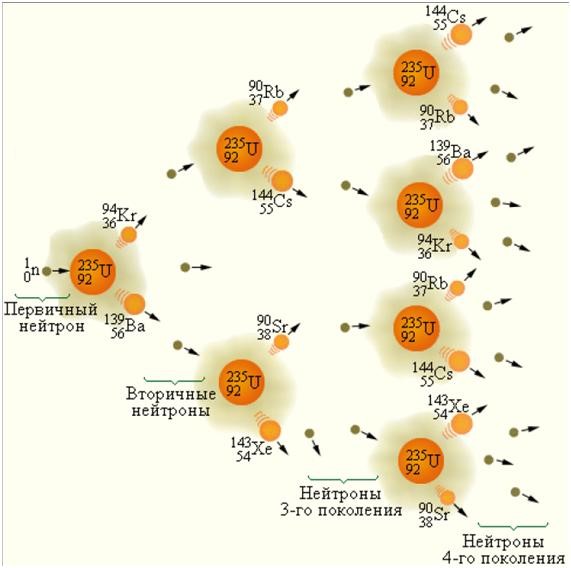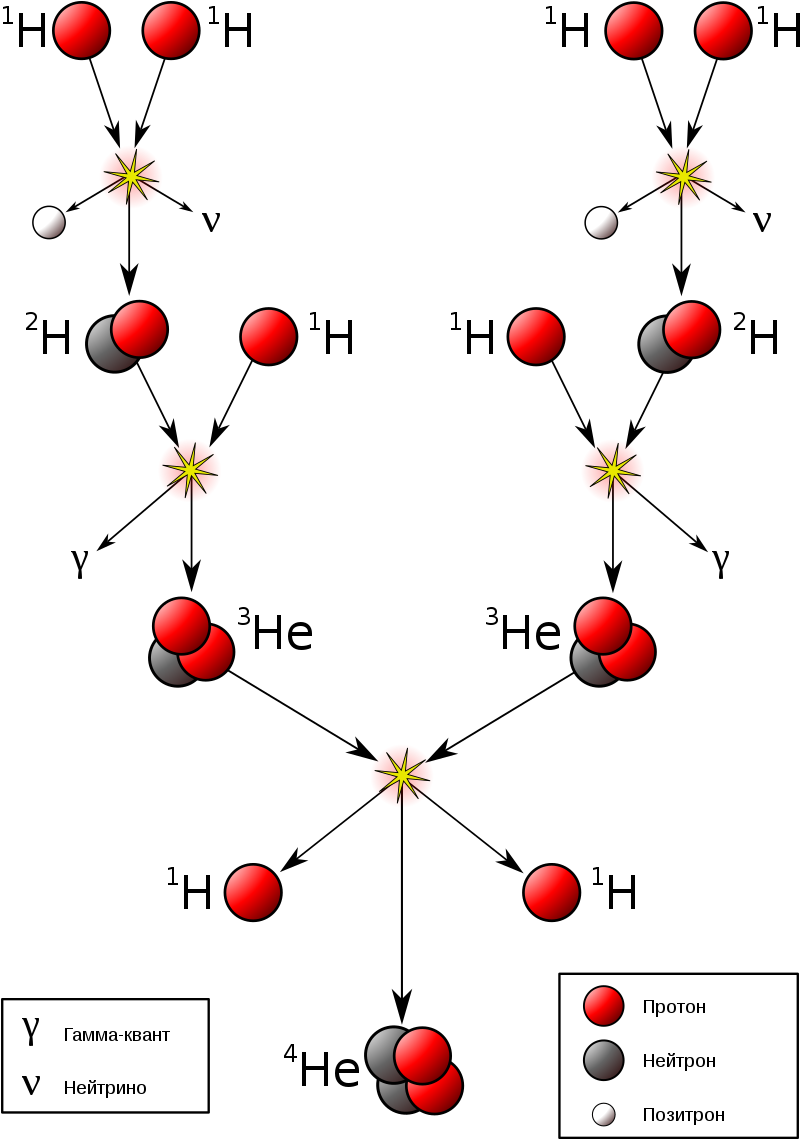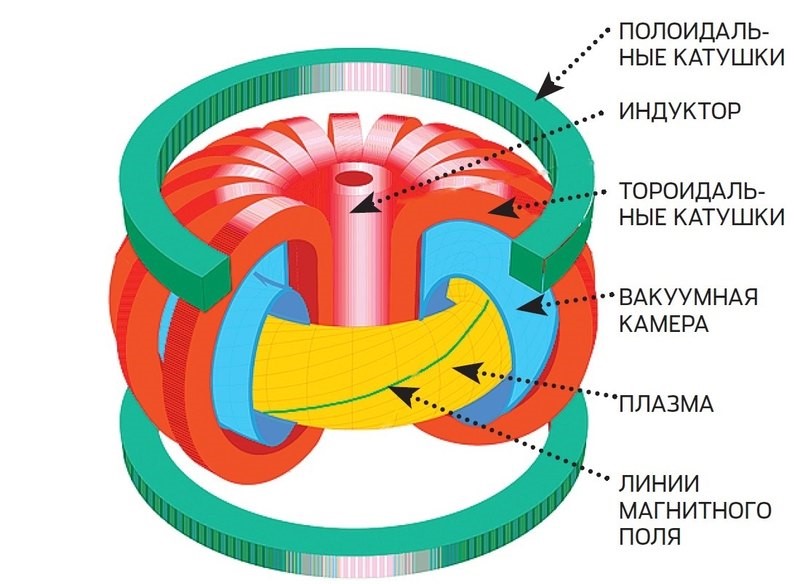
This is what the ITER complex under construction looked like in February 2020. ITER may become the first installation that will make it possible to obtain "burning" or self-sustained thermonuclear plasma. This facility under construction will house a thermonuclear tokamak and its support systems. Photo from the ITER archive
Habré did not ignore the newsthat China has launched a new tokamak, the HL-2M Tokamak. This news is especially interesting in that it refreshes the memory of the sad long-term construction of our century - the future ITER thermonuclear reactor, which is being built by the forces of all of Europe in the south of France and should become the first such device that could produce more energy than it consumes. Nevertheless, we note with regret that both HL-2M and even ITER are depressingly far from a full-fledged thermonuclear power plant.
We will not go into the details of the device of tokamaks and the ITER itself - these topics are discussed in abundance in all kinds of sources, for example, in the aforementioned habron news. Under the cut, we will talk about what path ITER opens before us (translated from Latin “iter” means “path”), and why this path turned out to be twisting like a stellarator eight.
Start
It can be said that it all began in the 1920s, when Arthur Eddington suggested that the sun and stars could burn through the conversion of hydrogen to helium. This idea was quickly taken up by journalists and science fiction writers, who believed that harnessing the energy of the Sun would not be difficult, and the most ordinary water could become the raw material for the fuel of such a reactor.
As you know, a thermonuclear reaction is physically opposite to a nuclear one. If during a nuclear reaction a heavy nucleus splits into lighter ones, then during a thermonuclear reaction the light nuclei merge into somewhat heavier ones. The most famous nuclear reaction is the fission of a uranium nucleus:

This is a typical sequence that takes place in a nuclear reactor at a nuclear power plant.
Thermonuclear reactions, on the contrary, proceed predominantly with the participation of helium and hydrogen, and lead to the formation of heavier isotopes from lighter ones. In the stars of the main sequence, the following thermonuclear reaction is most typical: The

details of thermonuclear fusion and design options for a thermonuclear reactor are described in a wonderful article published on Habré by Mikhail Svarichevsky in 2013. There you can also read the author's skeptical verdict, according to which full-fledged thermonuclear energy is a matter of the distant future. The article is really fiery:

For now, we note that the technical difficulties that stood in the way of creating a thermonuclear power plant turned out to be so serious that the periodization of its development is incomparable with the pace of development of nuclear energy. Chronology:
Nuclear fission
1939 - discovery (L. Meitner and O. Frisch)
1942 - nuclear reactor Enrico Fermi ("Chicago woodpile") - controlled nuclear reaction
1945 - first nuclear test (Trinity) and bombing of Hiroshima and Nagasaki - uncontrolled nuclear reaction
1956 - first nuclear power plant (Obninsk)
1986 - the accident at the Chernobyl nuclear power plant
Nuclear fusion
1926 - the hypothesis (A. Eddington) was expressed in the article "The internal structure of stars"
1934 - E. Rutherford synthesized helium from tritium
1952 - the first thermonuclear explosion was carried out in the USSR (hydrogen bomb, uncontrolled reaction)
1954 - the first tokamak was built in the USSR
... ...
2025 - ITER is expected to be started.
Nevertheless, in the 2019 IAEA Bulletin , the idea of creating a fusion power plant is discussed very seriously and even on a daily basis. Three conditions are given that must be met at a full-fledged thermonuclear power plant:
- Very high temperatures (over 100 million degrees Celsius)
- Sufficient density of particles in the plasma (where the reaction takes place) - which increases the likelihood of collisions between particles
- Strong enough confinement, preventing possible plasma leaks and ensuring a stable thermonuclear reaction.
Further in the document follows a disclaimer that the most successful design of a thermonuclear reactor at the present time is precisely the tokamak.
If you have not yet had time to familiarize yourself with the above links and brush up on how a tokamak looks and works, we will briefly dwell on this issue.
Tokamak is an abbreviated word meaning "toroidal chamber with magnetic coils". The first tokamak was constructed in 1954 in the USSR, and the term was proposed only in 1957. In the West, interest in the construction of tokamaks arose much later, in 1968, after a group of British scientists got acquainted with such a device at the Kurchatov Institute, who were convinced of its efficiency. So, a tokamak is originally a toroidal vacuum chamber filled with a mixture of deuterium and tritium, heavy hydrogen isotopes. The walls of the tokamak, of course, are not able to keep the hot plasma inside, in which thermonuclear reactions take place, therefore the plasma is held in the toroidal chamber using the strongest magnetic fields and, being there, resembles a cord in shape.

The most important physical indicator that makes it possible to judge whether a thermonuclear reaction will produce more energy than the reactor consumes is the Lawson criterion , which boils down to the following formulation:
For thermonuclear fusion to become a source of energy, the product of the density of particles and the time of their confinement at an extremely close distance from each other must exceed a certain value.
At present, the most energetically favorable thermonuclear reaction is considered to be thermonuclear fusion involving two isotopes of hydrogen: deuterium and tritium. When a deuterium nucleus and a tritium nucleus merge, a helium nucleus plus a very high-energy neutron is formed. If the necessary conditions are met, the energy released in this case is sufficient for further thermonuclear reactions. In addition, the deuterium-tritium reaction is the most expedient from a practical point of view, since in the course of it the Coulomb barrier is overcome most easily, and this reaction is most conveniently maintained under artificially created conditions.
It should be noted that, along with the deuterium-tritium pair ,three more variants of thermonuclear reactions that can potentially be applied in industry. Here they are all:
- Deuterium + deuterium (tritium and proton 4.0 MeV),
- Deuterium + deuterium (helium-3 and neutron, 3.3 MeV),
- Deuterium + tritium (helium-4 and neutron, 17.6 MeV),
- Deuterium + helium-3 (helium-4 and proton, 18.2 MeV).
We will return to the fourth reaction, the most favorable from the energetic point of view, below.
An important factor limiting the resource base for thermonuclear power engineering is the need for deuterium extraction and tritium production. Let's dwell on it in more detail.
Reproduction of tritium
Deuterium is relatively abundant in nature and can be recovered in sufficient quantities from seawater. Tritium, although present in nature, is too rare to be mined in useful quantities. Therefore, it will have to be synthesized industrially. Currently, tritium is extracted from the coolant of heavy water reactors, or is obtained by bombarding lithium targets in light water reactors.
It is assumed that the operation of one 500-megawatt thermonuclear power plant will require about 50 kilograms of tritium fuel per year. This value not only greatly exceeds the capabilities of modern industry, which makes it possible to obtain about 2-3 kg of tritium per year, but also does not take into account the production cost, which will reach billions of dollars. Accordingly, thermonuclear energy requires the development of a method that would make it possible to multiply tritium directly at the station. Fortunately, thermonuclear reaction itself could potentially become such a method.
By surrounding the tokamak with a lithium blanket, it is possible (with the release of heat) to obtain tritium, when the lithium nuclei will capture the neutrons formed during the fusion and spontaneously transform into tritium. Technological solutions are currently being developed to collect the tritium thus formed.
Further, a pertinent question is: is thermonuclear energy so environmentally friendly and energetically beneficial? Some of the objections raised in the aforementioned article by Mikhail Svarichevsky should be cited here:
- — . D+T , — ~10 , . 5-10 .
- Q=10 ( 10 , ). ITER 2030- .
- Q=10, , - , . ( -)
- There is not a lot of thermonuclear fuel - tritium is very expensive and scarce. Its production is neither easier nor cheaper than obtaining plutonium from uranium waste or U-233 from thorium.
- Helium-3 - would not help humanity in any way, even if there were mountains on earth. The parasitic reaction D + D will still give radiation, and the optimal temperature is a billion degrees, much more difficult than D + T over which humanity is fighting at the moment.
And here is what IAEA notes about the environmental friendliness of thermonuclear power plants:
The simplest thermonuclear fusion process involves two isotopes of hydrogen: deuterium and tritium. Tritium is radioactive, but its half-life is short (12.32 years). It is used only in small quantities and therefore does not pose the same hazard as long-lived radioactive nuclei. As a result of this reaction of deuterium with tritium, a helium atom (an inert gas) and a neutron are formed. The energy of these products (atom and neutron) can be harvested to power a reactor and generate electricity, respectively. Consequently, no long-lived radioactive waste remains from thermonuclear reactions. But the fusion process produces neutron-activated materials that surround the plasma. In other words, when neutrons (a fusion reaction product) hit the walls of the reactor, the reactor itself and its components become radioactive.Therefore, during the construction of thermonuclear power plants in the future, it will be necessary to optimize their design in such a way as to minimize such neutron radioactivity and the volume of radioactive waste generated as a result.
Thus, ITER can be considered not so much a supertokamak as a test prototype of a thermonuclear power plant, which will make it possible to assess the technological and environmental challenges facing the industry. Among them: tritium breeding, plasma monitoring, advanced diagnostics, anti-wear of structures. In addition, it remains to be seen how long the reactor vessel is able to withstand exposure to hot plasma.
Like any promising technology, thermonuclear energy is already generating its own "startups". Here are the most important ones:
- TAE Technologies. TAE (, ) 20 « ». TAE - (DT), . , – , DT – , - . FRC (. ).

- Commonwealth Fusion Systems (CFS). -, . CFS , , ITER. REBCO , (ITER - ). , , .
- General Fusion. , « » (MTF). MTF , - . , , , . .
- Tokamak Energy . The company, based in the UK, aims to launch traditional fusion using a tokamak, but uses a tokamak that resembles a sphere rather than a donut. This unit is called ST40 and is currently undergoing research. It is assumed that temperatures up to 15 million degrees Celsius are attainable in it.
As follows from the above, in the first third of the 21st century, we came to the study of all these exotic technologies of thermonuclear fusion mainly for three reasons that complicate the industrial use of such energy:
- Difficulty of mining tritium.
- The complexity of the stable confinement of the magnetized plasma within the reactor.
- The complexity of the disposal of radioactive waste - due to the effect of neutrons, the reactor itself becomes radioactive.
Regolithic Golconda
And here is the time to move on to the final part of our excursion: to pay attention to helium-3, which participates in the fourth of the most important thermonuclear reactions mentioned above:
Deuterium + helium-3 (helium-4 and proton, 18.2 MeV)
The energy yield is noticeably higher 17.6 MeV, generated by the tritium reaction, and instead of a neutron we have a proton as a by-product, which largely solves the problem of radioactive contamination.
The main problem is that helium-3 (the nucleus of which consists of two protons and one neutron) is extremely rare compared to the main isotope helium-4 (two protons and two neutrons): the share of helium-3 on Earth is 0.000137% (1.37 ppm); the main source of this isotope on our planet is the solar wind.
But back in 1986, experts from the Institute of Fusion Technology at the University of Wisconsin determined that the lunar soil, regolith, could contain a million tons of helium-3. The extraction of helium-3 on the Moon can be a commercially viable venture, since the energy extracted from it is 250 times higher than the energy required to extract it and deliver it to Earth. Lunar reserves of helium-3 may be enough to provide thermonuclear power for centuries.
Neutrons formed during deuterium-tritium fusion escape from the reactor, since they do not have an electric charge and, therefore, cannot be contained by an electromagnetic field. On the contrary, protons - a by-product of a thermonuclear reaction with helium-3 - have a positive charge, and it is not difficult to capture them. Moreover, you can use the energy of the protons themselves, which will directly go to the generation of electricity. In this case, there is no need to obtain water vapor to rotate the turbine - it is according to this principle that energy is generated at modern nuclear power plants.
Thus, the exploration of the moon acquires a non-illusory practical value. The development of thermonuclear fusion technologies, possibly initially based on deuterium-tritium fusion, could become a stage on the way to the energy self-sufficiency of the lunar regolith mining industry, the purpose of which is to provide the Earth with thermonuclear fuel.
We're so deep into science fiction here that it's time to carefully put an end to this post and thank everyone who has finished reading it and is ready to discuss it.
Although, as an epilogue, I propose to look at thisan old article from the magazine "Schrödinger's Cat". Not only does it have cool pictures, but it also threw a bridge from the topic we covered here to the topic of terraforming. In this industry of the future, apparently, fusion is also indispensable.
In the meantime, both ITER and the entire described path are far from complete. But I would like to hope that the road will be mastered by the walking one.